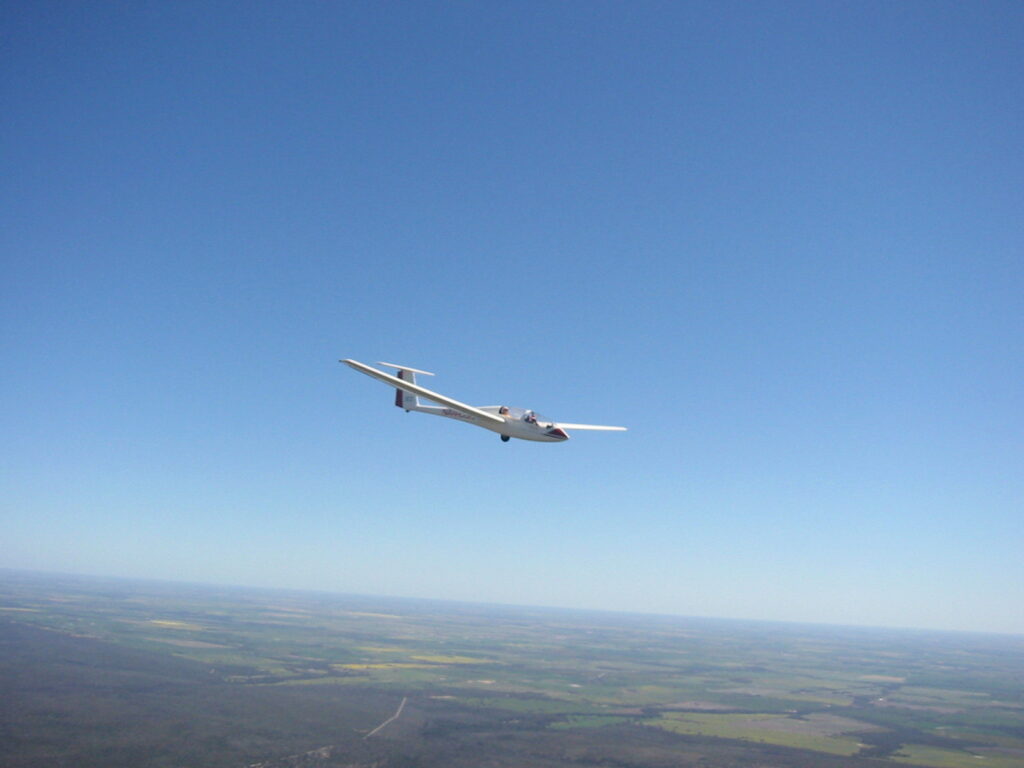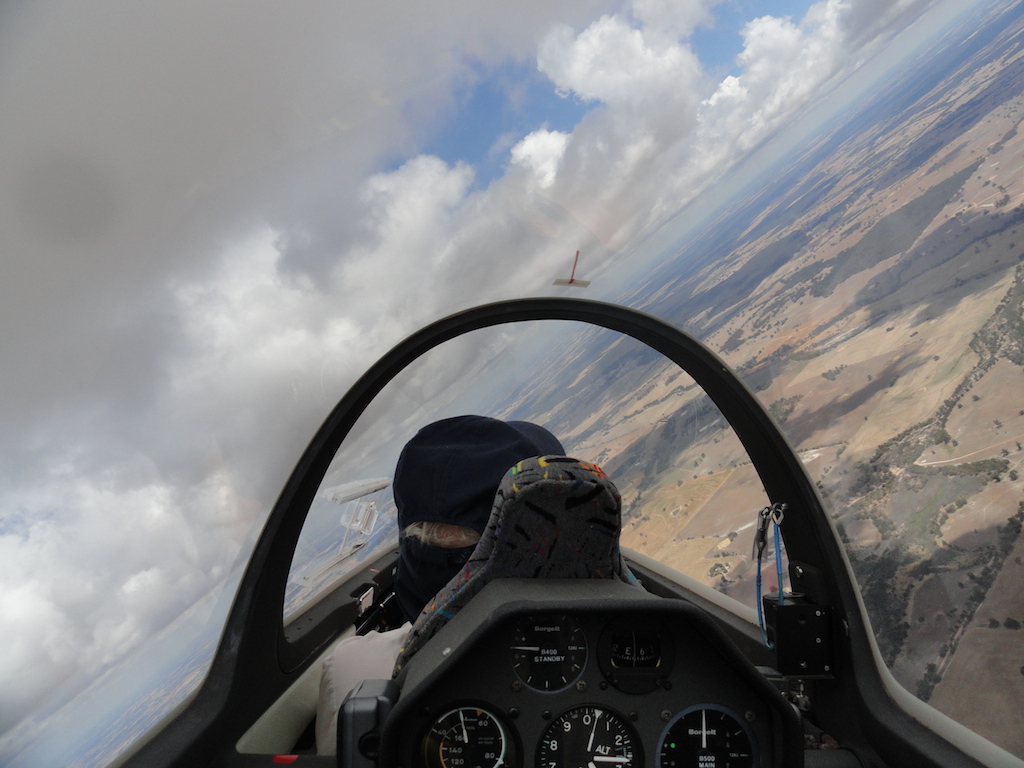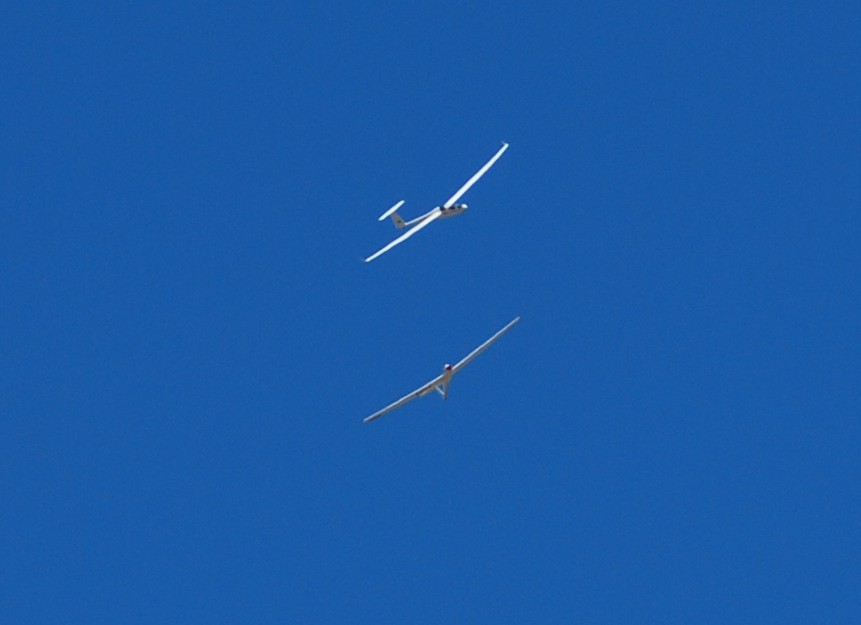About Gliding
Soaring
Soaring is the name given to the ability to keep a glider flying, sometime for hundreds of kilometres and many hours, using only the energy available in updrafts in the atmosphere called thermals.
Thermals are convection currents in the atmosphere caused by temperature differences on the ground due to heating from the sun. Thermals are made up of a strongly rising core of air, which is initiated by the hot spot on the ground, surrounded by a ring of descending air. The height of the thermal depends on the atmospheric conditions of the day but can be several thousand metres. If the atmosphere is moist enough thermals are marked by a cumulus cloud that forms at the top, which helps glider pilots locate them.




